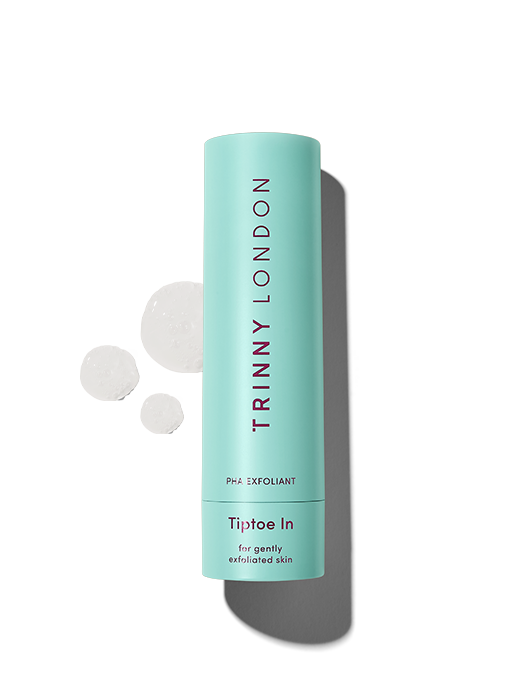
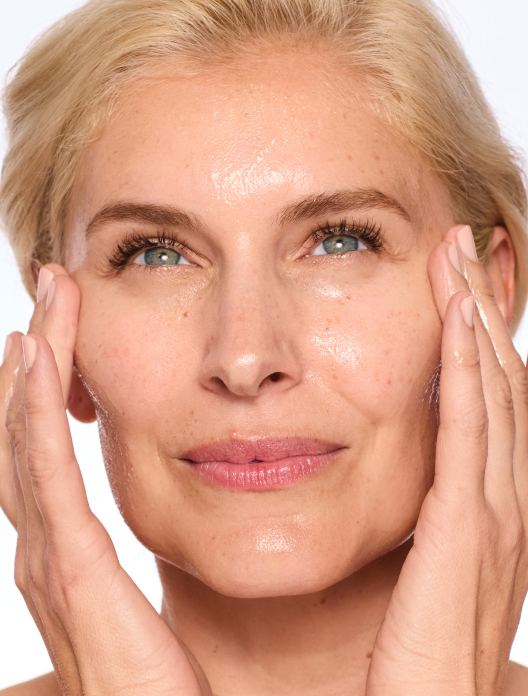
Tiptoe In
Dieses hautfreundliche Peeling schenkt dir strahlende Haut und ist für alle Hauttypen geeignet
Kostenlose Standardlieferung bei Bestellungen über 150 €

Before we get into the aptly named nitty gritty, let’s first recap why exfoliation is such a crucial step in your skincare routine. The aim of the exfoliation game is to buff away dead cells from the surface of the skin. This has a number of benefits, including preventing future build-up and breakouts, evening skin texture and fading hyperpigmentation. Exfoliation also plays the role of groundskeeper, clearing the path so your other skincare can access your skin more effectively.
There are three key types of exfoliation: enzyme, physical (also known as manual and granular), and liquid exfoliaton. The first is the gentlest of all methods of exfoliation, using enzymes to nibble away at the bonds that hold dead skin cells to the surface. Physical exfoliation normally involves the use of a scrub with granular particles (but also can involve a cloth or device) to detach dead skin cells, while liquid exfoliation dissolves the same bonds the enzymes nibble at, just at a faster pace.
Which exfoliation route you take is down to personal preference, as well as your skin type and tolerance level. When comparing physical and chemical exfoliation, think of them as two vehicles heading to the same destination but taking slightly different routes.
There are different forms of both liquid and physical exfoliation. Liquid exfoliants can be divided into three key families: alpha-hydroxy acids, beta-hydroxy acids and poly-hydroxy acids, all of which have different benefits for the skin. Physical exfoliation can span anything from muslin cloths to rotating tools, but the term is most commonly used to describe scrubs. Not all scrubs are created equal, and the kind of particles varies wildly. While some are smooth and round, delivering a gentle exfoliation, others are jagged, making them much more abrasive. It’s important to shop around and find the right one for your skin.
How you apply them matters too. As you’re in control of the pressure and manipulation, there’s a risk of being overzealous with physical exfoliation. Scrub at the skin too much, and you run the risk of scratches or scrapes. Go slow, and treat your skin with respect. There’s less temptation to tug and pull at the skin with liquid exfoliation, as they can simply be smoothed on with your fingertips or a cotton pad.
As a general rule, physical exfoliation with a scrub is best limited to once or twice a week. Liquid exfoliants can be used as often as once a day, as long as you’re using the right product and your skin is tolerant.
First up, there are poly-hydroxy acids, which include things like gluconolactone and lactobionic acid. They have a large molecule size, which means they can’t penetrate the skin very deeply, working on the very surface. For this reason, they’re a great entry point for chemical exfoliant novices. They’re gentle, which makes them well-suited to skin that’s easily irritated.
Alpha-hydroxy acids are the star of the chemical exfoliation world, and will give the most impressive results. Thanks to their smaller molecule size they are stronger than PHAs, which means they’re only really suitable for experienced acid users. Glycolic acid is one of the very smallest, which means it poses the largest risk of irritation. Lactic, malic and mandelic acids are slightly larger than glycolic, offering impressive exfoliation with less chance of irking your complexion. Both AHAs and PHAs are water soluble, which makes them best suited to skin that needs help on the surface levels, with things like dryness and hyperpigmentation.
If your skin is oily and your main gripes are blemishes and congestion, a beta-hydroxy acid (BHA) like salicylic acid is a better choice. Salicylic acid is oil soluble, which allows it to travel slightly deeper into the pores, shifting dead skin cells and debris to clear current breakouts and prevent future blockages.
Shop the article


Dieses hautfreundliche Peeling schenkt dir strahlende Haut und ist für alle Hauttypen geeignet
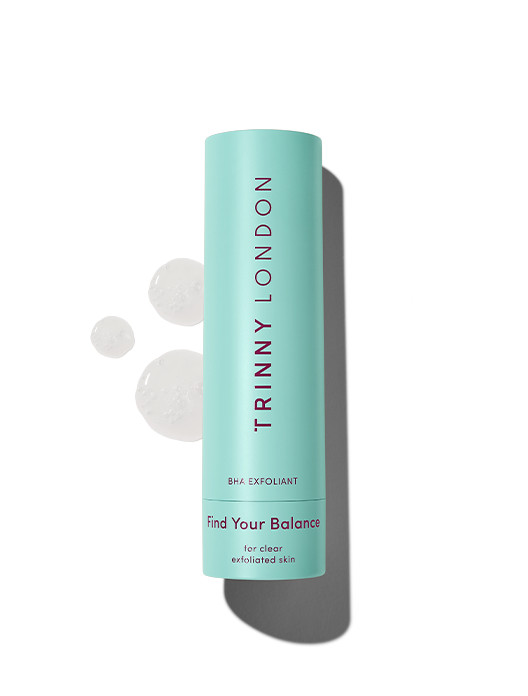
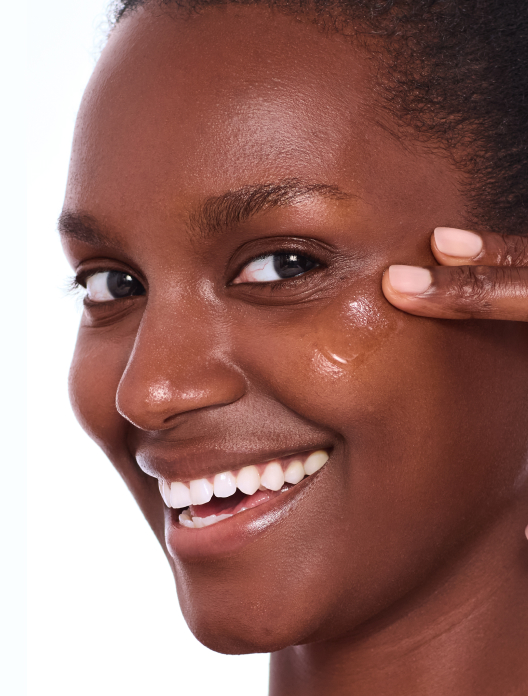
Klärender Komplex für unreine Haut
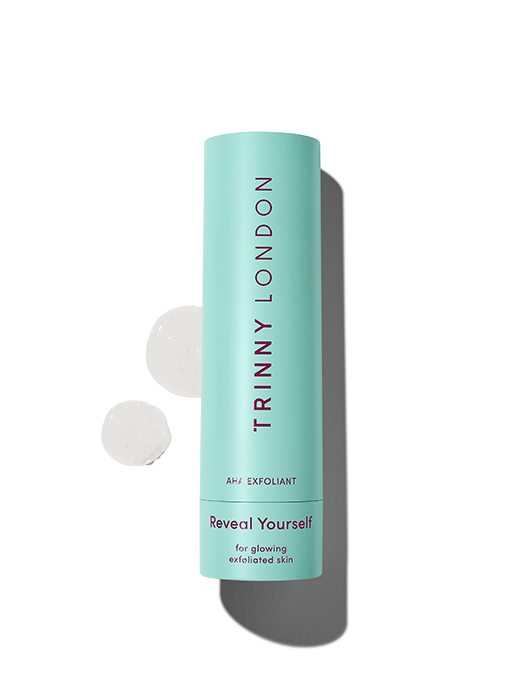
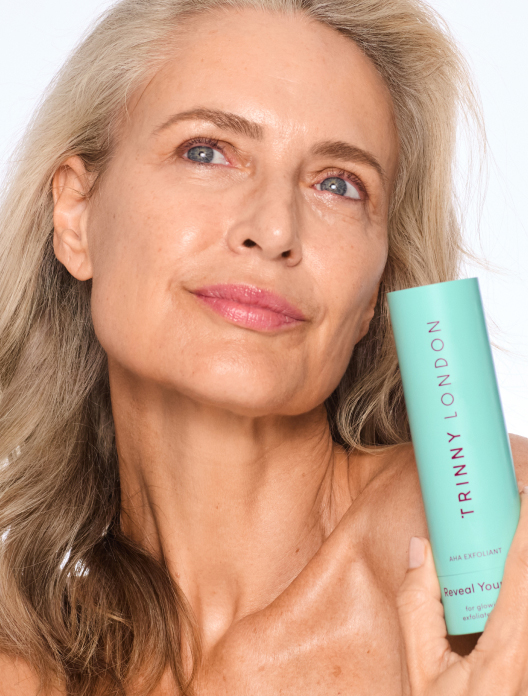
Hochwirksames Peeling für gesunden Glow, für alle Hauttypen geeignet (außer sensible Haut)